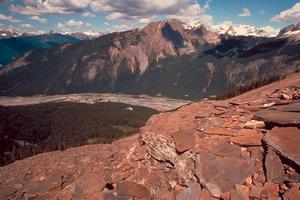
Brachiopoda, phylum of bivalved marine invertebrates, sometimes called lamp shells. Brachiopods attach to the seabed by a stalk and feed on particles caught in currents that are generated by their ciliated crown of tentacles (lophophore). The approximately 260 living species are relicts of some 30 000 fossil forms which inhabited Continental Shelf areas, especially during the Palaeozoic era (544-250 million years ago). They are important to geologists in establishing stratigraphic sequences useful in oil exploration and in determining shorelines and depths of ancient seas. The living genus Lingula differs little from a Cambrian fossil relative more than 510 million years old. Brachiopodlike forms are represented in the Burgess Shale, BC.
See also Geology; Palaeontology.

 Share on Facebook
Share on Facebook Share on X
Share on X Share by Email
Share by Email Share on Google Classroom
Share on Google Classroom



